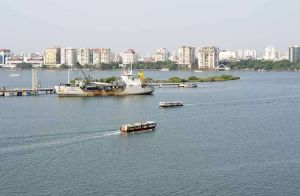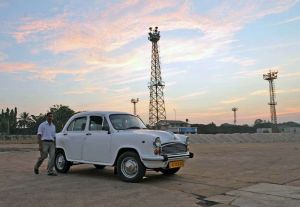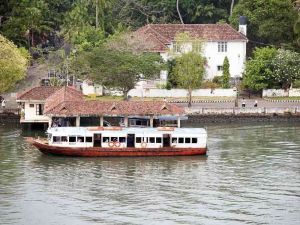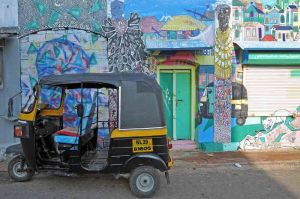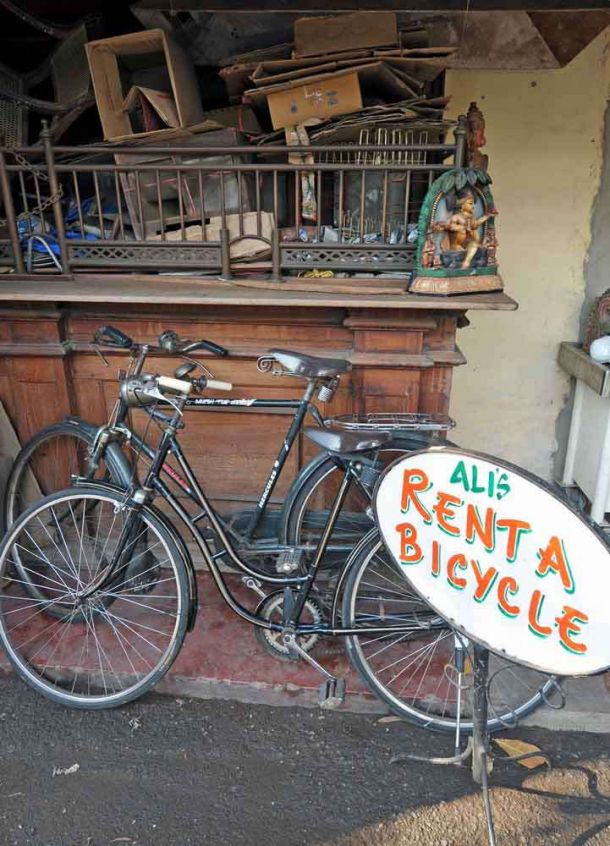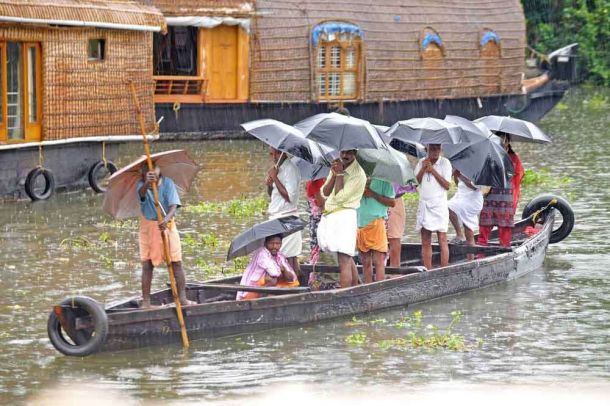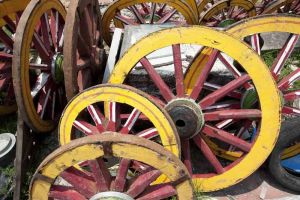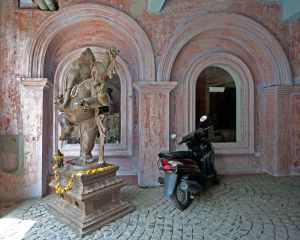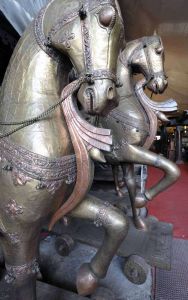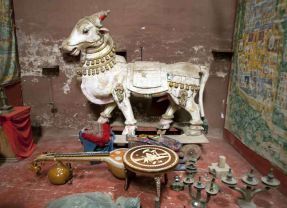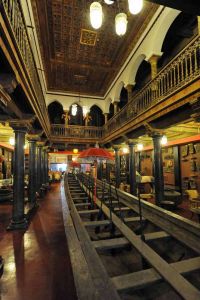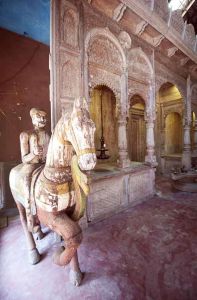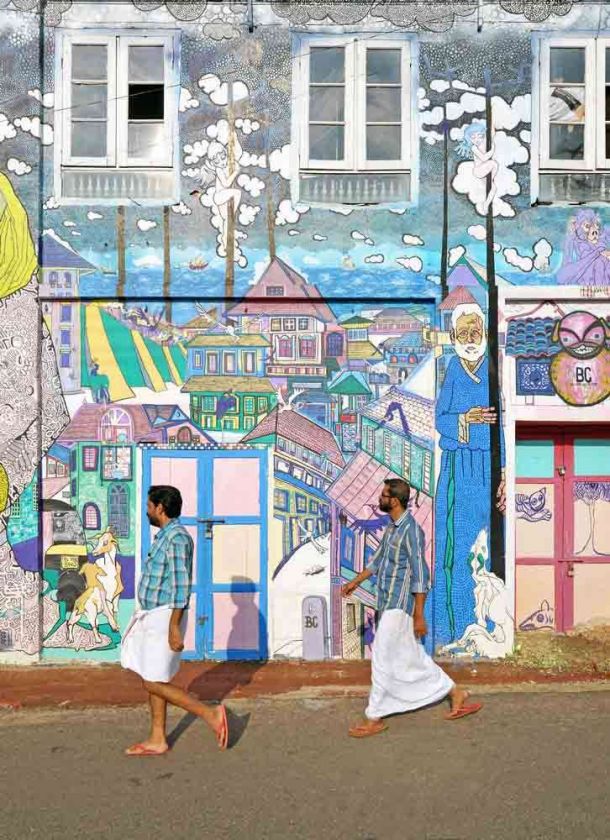This relative backwater of India offers a superb cross section of history, markets and the ‘backwaters’ themselves that will easily keep you fascinated for a few days.
Here’s our round-up of attractions that make Cochin a really worthwhile stopover, or destination, within the sub-continent.
If you hold up your left hand, palm towards you, Cochin (or Kochi as it’s also known) is like your thumb and first two fingers – with your thumb being the oldest part of Fort Kochi, your index finger that of the central Willingdon Island that houses cruise terminals, government/customs offices and oil terminal – and lastly your longest finger representing the newer high-rise commercial/shopping, city centre part of Ernakulum – all three separated by waterways that are plied by cruise ships, small commercial freight and numerous water taxis and sightseeing boats.

Top grade hotels can be found in each of the ‘fingers’; from the more modern style Le Meridien in Ernakulum; Taj Vivanta Malabar and Trident Hotel on Willingdon; to the ‘new’ colonial styled Brunton Boatyard and Old Harbour Hotel on Fort Kochi.
Getting around:
If you’re landing at Kochi International Airport you’ll inevitably get a taxi or private transfer to your next stop or hotel as you’re quite a way outside of the city to the north of Ernakulum (27kms) but if landing by cruise ship then you can hop on a rickshaw to the water taxi terminal across the island (or walk it in ten minutes) and you’ll be in Kochi within 20mins by boat for a princely 4 Rupees (approx. 5p). If you succumb to a rickshaw to Fort Kochi it means they’ll take you some way south to cross the harbour bridge and then back up to the Fort area – an unnecessary but also inexpensive ride when the water taxi can be much more interesting. A local map will show you the simple circuit that the water taxi takes and the water taxi people will nod helpfully if you ask for Ernakulum, Mattancherry, Willingdon or Fort Kochi Ferry Station – which are really the only ones you’ll want.
Once on Fort Kochi then an auto-rickshaw, or rented bicycle (if you’re brave) will be the easiest transport.
Take the trouble to get some rupees where you land in Cochin, otherwise you’ll be charged in dollars at a rate that is easily double the Rupee value. As with anything in India, always barter and enjoy the haggle downwards from a figure that will always start from at least double the fair price.
Where to go, what to see:
We haven’t included Ernakulum in this review as it’s just another metro centre with all the same stuff you’ll find in any other up and coming city since the original capital of colonial Cochin State with its predominantly Christian community was smothered by commercial growth to become the financial hub of Kerala. We’re simply dealing with the more attractive and historic elements of Cochin here.
Backwaters tours
The backwaters of Kerala are one of its major attractions. Best known is the area of Alleppey but many of the backwaters tours start or end in Cochin – so it’s an ideal focal point for your travels.
Whilst our own time on a boat in the narrow channels and rivers was shrouded in mist and unseasonal rain, it didn’t detract from the fascinating variety of water craft and village life that use this network of vein-like routes. It’s a hugely colourful and interesting area and a stay on a Keralan houseboat will add a totally different dimension compared with anything else you’ll do in India.
The backwaters are made up of over 900 km of interconnected waterways, rivers, lakes, estuaries and inlets, with its own unique ecosystem that meets at the Arabian Sea.
You can spend a whole vacation on the backwaters in a houseboat, or simply take a ride for a few hours on a tour boat. Despite our thirst for travel and no matter how luxurious the craft might be, we think that longer than two or three days on a houseboat is likely to exhaust the variety of scenery and send us stir crazy – but it’s a very personal choice.
Fort Kochi
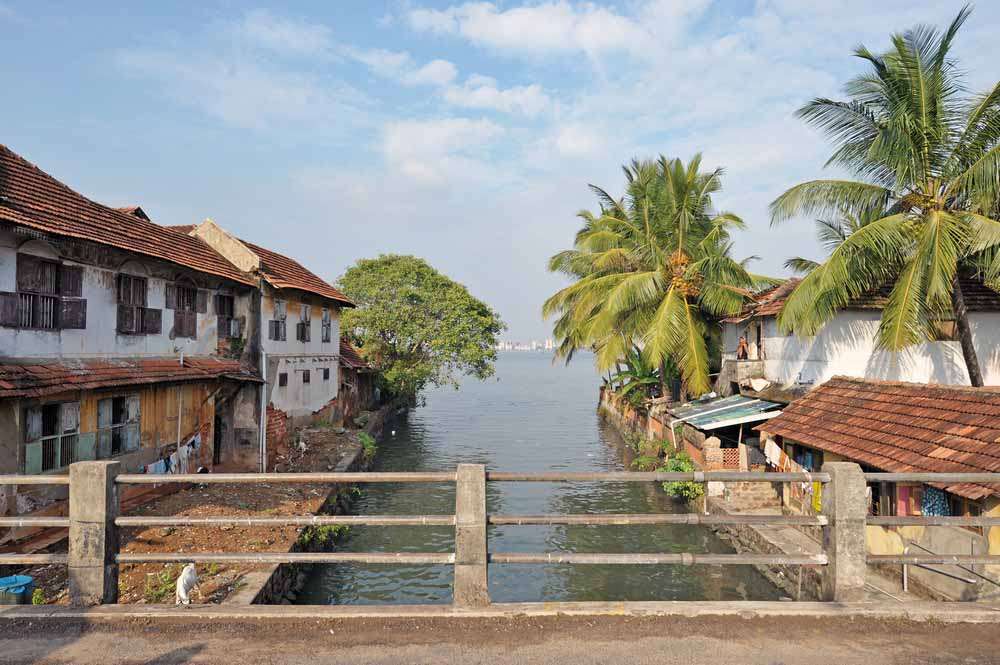
Fort Kochi charm
Combining a houseboat stay with time in Fort Kochi is, for us, the best way to enjoy this area. Fort Kochi still reveals the remnants of Dutch and English colonial influence, whilst throwing in a smattering of other cultures and local attractions. It depends how long you have in Fort Kochi but you can either walk the full distance over a couple of days, or cover the whole lot in one day by Auto-rickshaw or taxi. The very best of Fort Kochi attractions all revolve around travelling between the Chinese Fishing nets on the northern tip of the peninsula to Mattancherry half way down the eastern side of it – with a couple of small diversions on the way.
Here’s just a few of the things to see in Fort Kochi.
Brunton Boatyard Hotel.
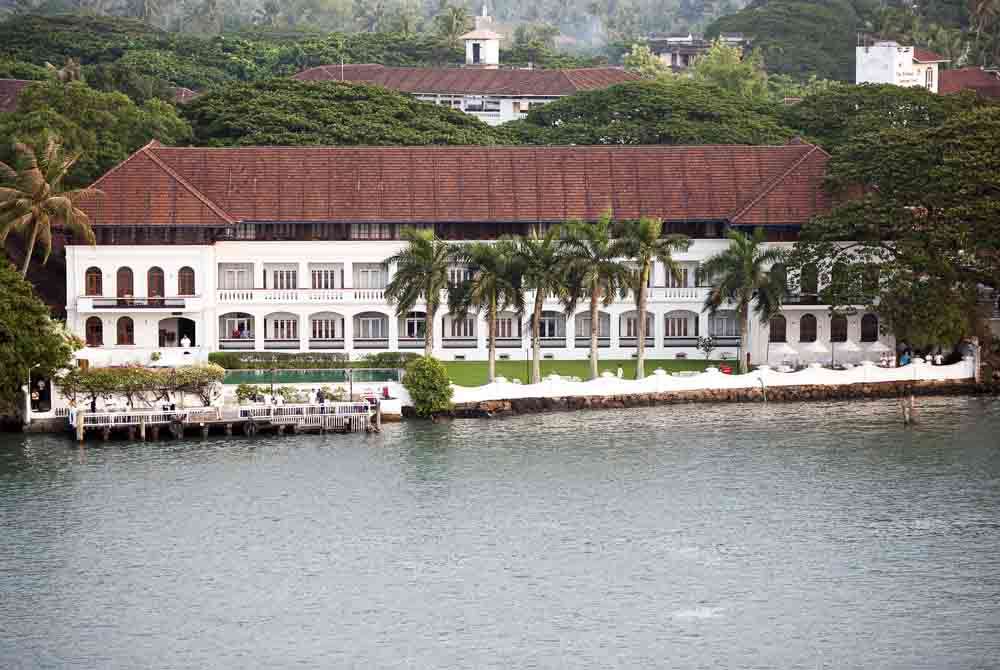
Dutch colonial style Brunton Boatyard Hotel
Even if you’re not staying here its worth a stop for a beer or lunch within its tranquil setting off the main road and by the water’s edge near Fort Kochi Ferry Station.
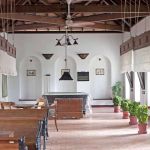 Originally a Dutch colonial ‘shed’ as one of the staff called it, it’s now been authentically rebuilt and significantly extended in the Dutch colonial style to replicate a substantial and wealthy residence. The rooms are lovely but it’s a good place to sit and chill whilst you plan your route around the Fort area.
Originally a Dutch colonial ‘shed’ as one of the staff called it, it’s now been authentically rebuilt and significantly extended in the Dutch colonial style to replicate a substantial and wealthy residence. The rooms are lovely but it’s a good place to sit and chill whilst you plan your route around the Fort area.
Chinese fishing nets

Traditional fishing ‘kayaks’ vie for a catch with the iconic Chinese nets
Heading west along the shoreline from Brunton Boatyard, you’ll find these traditional Chinese nets, which are as much a part of the Cochin landscape as the houseboats. They have become more of a tourist attraction than a viable form of fishing, if the catches we saw were anything to go by.

Chinese fishing nets along the northern shore of Fort Kochi
Although the area has been cleaned up somewhat since our earliest visits, it nevertheless leaves something to be desired in terms of picture book presentation. When all is said and done, however, they are worth the visit and a useful start/end point for your Fort Kochi tour.
Vasco Da Gama/St Francis CSI church.

The ‘perpetually closed’ Dutch cemetery

Vasco Da Gama/St Francis church
The first European church built in India this building marks Portuguese influence in the area and is situated in the colonial part of town with the nearby Dutch cemetery which appears to be perpetually closed except ‘by arrangement’. Whilst the church itself is unremarkable the area as a whole is worth the stroll around.
Santa Cruz Cathedral
If churches are your thing then as you meander the streets eastwards en route to the markets, Santa Cruz Cathedral will provide you with another Portuguese take on Christianity in India and is an altogether more imposing building that the Vasco Da Gama church.
Spice Market(s)
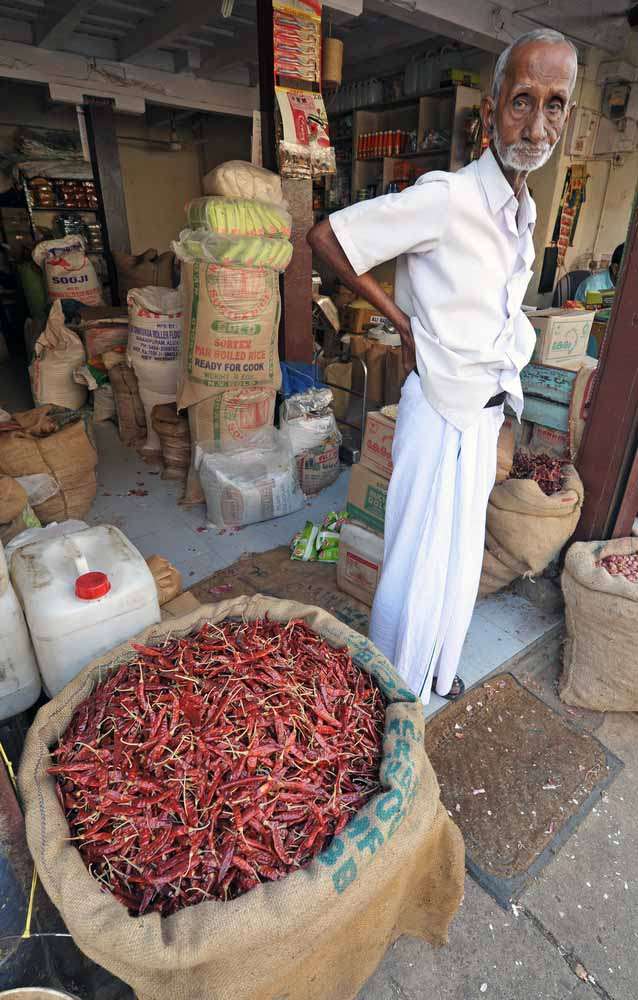
Colourful and fragrant spice markets abound throughout the Fort Kochi peninsula
There are numerous shops/stalls/garrets etc. devoted to Indian spices, or ‘Ginger markets’, which helps to illustarte the value of this continent on the colonial spice routes. There’s not much to choose between them, as all/any are worth a visit and they’ll all offer you tea/chai or sample sweets as you browse. All will be fascinating and just be aware that your rickshaw driver will lead you to his favourite, where he gets a commission for dropping you at the door.
It’s in these backstreet areas in particular, where you’ll be completely safe, that you start to get a feel for the town and traditional Kochi way of life. There’s no substitute for just wandering, even if you do get lost – you’ll always end up at the water’s edge somewhere.
Bazaar Road
 Making your way eastwards will eventually bring you to the road that skirts the eastern edge of Fort Kochi – Bazaar Road. As the name suggests is full of shops and stalls, most of which are more suited to the daily needs of the locals than the magpie eyes of tourists but there are an increasing number of tourist related junkshops as well.
Making your way eastwards will eventually bring you to the road that skirts the eastern edge of Fort Kochi – Bazaar Road. As the name suggests is full of shops and stalls, most of which are more suited to the daily needs of the locals than the magpie eyes of tourists but there are an increasing number of tourist related junkshops as well.
Jew Town
For us this is one of the more interesting areas of Fort Kochi and one we leave until last as it tends to occupy most of our time.
It’s more quaint and aged than other parts of Fort Kochi and seems to be the centre for curios and antiques that always fascinate us – even if we can’t find a place for them back in England!
Antiques.

Not just endless antiques but complete building facades at Heritage Arts!
The main attraction of Jew Town for us is the various antiques emporia that line the road just before you reach the two right-hand corners in Jew Town Road that lead to Synagogue Lane. In particular, Heritage Arts is a labyrinth of passages and lanes through an endless wonder of substantial antiques from the Princely States and colonial era. We could spend a day in this shop alone – and it even has a waterside café/restaurant so that you don’t have to leave.
The antiques vary from whole building facades to huge Hindu Gods, art, sculpture, brass and copper, wood and ceramics of every age and size. If you’ve ever wondered what to do with a souvenir when you get it home, you really need to think this one through before purchasing anything in Jew Town that could dominate your life going forwards!
Heritage Arts must span about two hundred feet behind the Jew Town Road but several smaller shops that line the street give the impression that it’s just a couple of small entrances. Once inside however you could easily lose yourself in its convoluted passageways – every corner bringing something new…well…old.
Synagogue.

Paradesi Synagogue, Synagogue Lane
Despite several visits we never get to Jew Town at the right time to visit the Paradesi Synagogue (Paradesi/Pardesi means ‘foreigner’ in Hindi) – not to worship the oldest synagogue in the Commonwealth but to view the interesting interior in this historic attraction. The synagogue is closed on Fridays, Saturdays and Sundays and also on Jewish holidays. It’s also closed through the midday period on each day that it’s open!
It’s one of the only practicing synagogues left in the south as the Jewish population has greatly diminished over the years – as of April 2016, only 5 Jews live in Fort Kochi.
Synagogue Lane is interesting in itself however and if you’ve reached the synagogue and found it closed, simply by backtracking a few feet you’ll find an alleyway that leads you straight through the block and comes out virtually opposite the Mattancherry ferry station.
On the way through the arcade you’ll have passed a couple of coffee shops that sell attractive snacks in a cooler, more civilised environment, as well as a few more fashionable and designer outlets than the ones we’ve led you to so far.
There are a few other attractions but none that we feel are really worth getting hot and bothered about on a sticky Cochin afternoon. Fort Kochi for us is one of the more interesting parts of India as it alludes much more clearly to the rich mix of cultures that have shaped India than do many other tourist centres in the country.
Summary
Given that you’ll find great examples of India’s own Hindu and Murghal heritage throughout the length and breadth of this vast country, unless you’re going to Pondicherry (southeast coast of India) for the French influence; or Simla (northwest Himalayan India) for the British colonial influence, or Goa (west coast of India) for the Portuguese, to name but a few – you’ll be hard pushed to find such an interesting an eclectic mix of all cultural remnants as you do in Fort Kochi – and all within a relatively small area.
Fort Kochi is certainly one of the more interesting bite-size destinations for us in India and if you’ve got the time, do consider it on your tour of this fascinating country.

 Let us help plan your holiday to India!
Let us help plan your holiday to India!
Why not download our guide brochure or give us a call today on 01202 030443, or simply click ‘enquire’ to let us know where you’d love to go?
![]()
I’ve listed and linked the hotels we mention in the post and then added a link to Heritage Arts below, so that you can have a browse around before you go!
Fort Kochi
Brunton Boatyard
Old Harbour Hotel
Willingdon Island
Vivanta by Taj Malabar
Trident Hotel
Ernakulum
Antiques Emporium
Heritage Arts 360 degree tour

